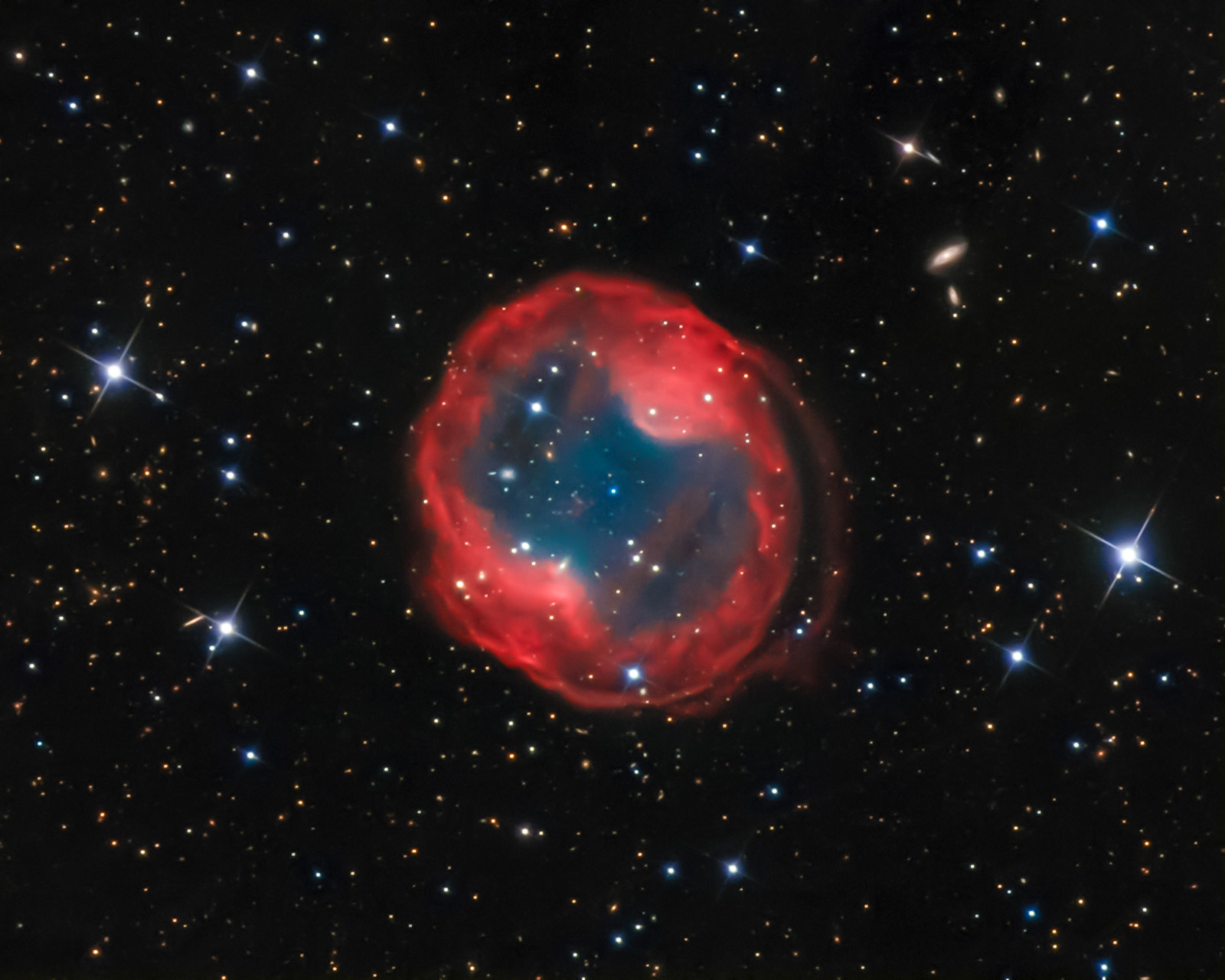
Planetary Nebula Jones-Emberson 1 |
|||||||||||||||||||||
About This PhotographLike other planetary nebulas, this is a shell of gas expelled by a dying star. (They are called "planetary" nebulas because early observers thought they looked a bit like planets; they don't actually have anything to do with planets at all.) The gas is made to glow by the ultraviolet light emitted by the exposed core of the star, seen in this photo as the very blue star at the center of the bubble. Since each chemical element emits its own specific color when stimulated this way, we can trace the distribution of elements within the nebula. The outer red shell is composed mainly of hydrogen, whereas the inner blue-green area comprises mainly oxygen. The gas in all nebulas is extremely thin. Even in the densest parts, the vacuum is still much better than can be created in laboratories on Earth. It is only because these objects occupy so much space that we can see them at all. The appearance of background galaxies seen through this wonderfully diaphanous bubble of gas illustrates just how tenuous some astronomical objects are. Why the strange name, "PK 164+31.1?" The "PK" comes from the names of Czechoslovakian astronomers Perek and Kohoutek, who in 1967 created an extensive catalog of all of the planetary nebulas known in the Milky Way as of 1964. The numbers indicate the position of the object on the sky. This object is also known as Jones-Emberson 1, after its discoverers. | |||||||||||||||||||||
|
|||||||||||||||||||||
